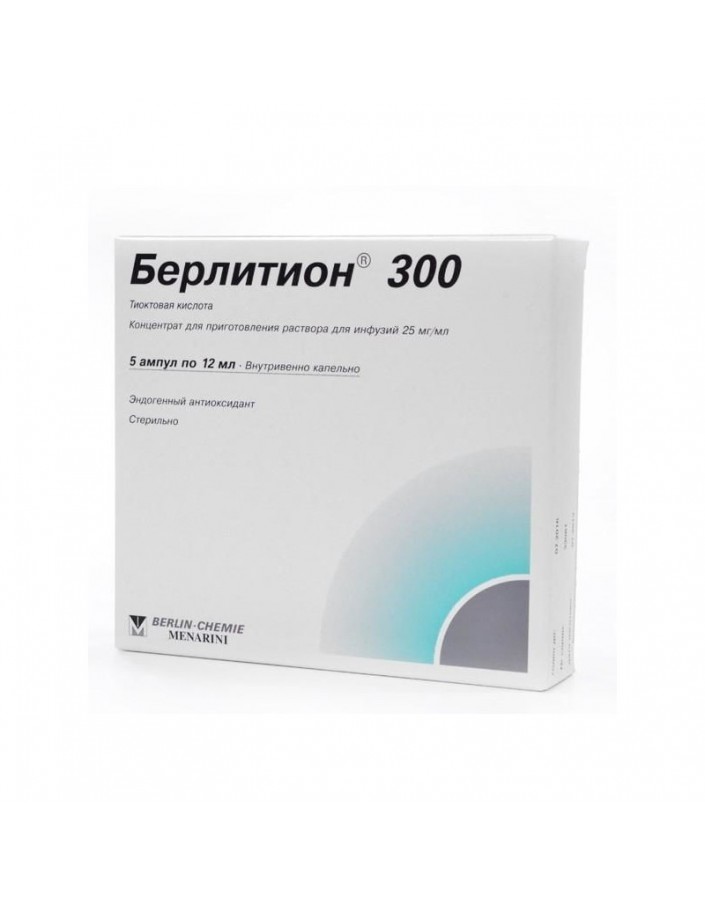




Security policy (edit with Customer reassurance module)

Delivery policy (edit with Customer reassurance module)

Return policy (edit with Customer reassurance module)
Mechanism of actionThioctic acid is an endogenous antioxidant (it binds free radicals); it is formed in the body during the oxidative decarboxylation of alpha ketoxylot. As a coenzyme of mitochondrial multienzyme complexes, it is involved in the oxidative decarboxylation of pyruvic acid and alpha keto acids. It helps to reduce the content of glucose in the blood and increase the glycogen content in the liver, as well as to overcome insulin resistance. By the nature of the biochemical action is close to the Vitamins of group B. Participates in the regulation of lipid and carbohydrate metabolism, stimulates the exchange of cholesterol, improves liver function. It has a hepatoprotective, hypolipidemic, hypocholesterolemic, hypoglycemic effect. The use of trometamol salt of thioctic acid in solutions for intravenous administration (having a neutral reaction) makes it possible to reduce the severity of side reactions. When ingestion is quickly and completely absorbed from the gastrointestinal tract (food intake reduces the absorption). The time to reach Cmax is 40-60 minutes. Bioavailability - 30%. It has the effect of "first pass" through the liver. The formation of metabolites occurs as a result of side chain oxidation and conjugation. The volume of distribution is about 450 ml / kg. The main metabolic pathways are oxidation and conjugation.Thioctic acid and its metabolites are excreted by the kidneys (80-90%). T1 / 2 - 20-50 min. Total plasma clearance - 10-15 ml / min. Indications and usageDiabetic and alcoholic neuropathy, hyperlipidemia, fatty liver, cirrhosis and chronic hepatitis (in the absence of severe jaundice), hepatitis A (moderate), intoxication (including heavy metal salts, pale toadstool), coronary atherosclerosis (treatment and prevention). Inside, in / in (jet, drip). Inside, at a dose of 600 mg / day at a time (on an empty stomach in the morning 30-40 minutes before breakfast), the appointment of 200 mg 3 times a day is less effective. In severe forms of polyneuropathy - in / in slowly (50 mg / min), 600 mg or IV drip, in a 0.9% solution of sodium chloride 1 time per day (in severe cases, up to 1200 mg is administered), for 2-4 weeks Subsequently, they switch to oral therapy (600 mg / day). In / in the introduction is possible using a perfuser (the duration of the introduction - at least 12 minutes). Adverse reactionsNausea and heartburn (by ingestion, much less often with the use of trometamol salt), allergic reactions: urticaria, anaphylactic shock; hypoglycemia (due to improved glucose uptake). After the on / in the introduction - seizures, diplopia; point hemorrhages in mucous membranes, skin, dysfunction of platelets, hemorrhagic rash (purpura), thrombophlebitis; with the rapid introduction - increased intracranial pressure, difficulty breathing. Overdose. Symptoms: headache, nausea, vomiting.Treatment: symptomatic. There is no specific antidote. ContraindicationsHypersensitivity. The injection form is the neonatal period (for drugs containing benzyl alcohol as preservatives). With caution - pregnancy, lactation. Special notesDuring treatment, you must strictly refrain from taking ethanol. In patients with diabetes mellitus, especially at the beginning of treatment, frequent monitoring of blood glucose is necessary. The drug is photosensitive, so the ampoule should be taken out of the packaging just before use. Drug InteractionsReduces the effectiveness of Cisplatin. Enhances the action of insulin and oral hypoglycemic agents. Incompatible with solutions of Ringer and dextrose, compounds (including their solutions), reacting with disulfide and SH-groups, ethanol. |